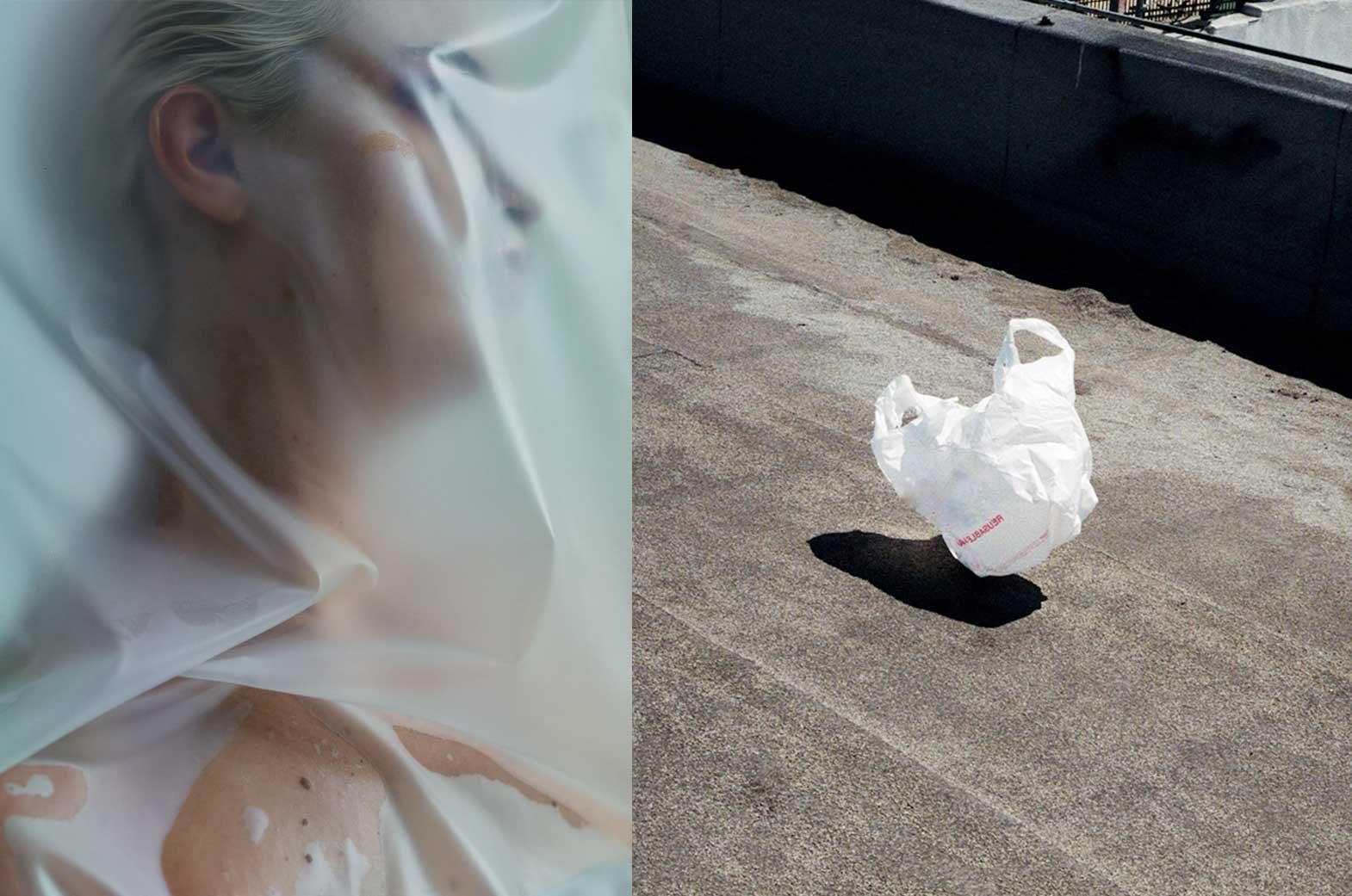As the final round of Global Plastic Treaty negotiations approaches in late November, we ask: can going plastic-free truly benefit business?
We all know that plastic is a problem: from its impact on intensifying environmental turmoil, to increasingly stark evidence connecting it to a catastrophic human health crisis, continuing to use plastic poses a risk in more ways than one.
With global attention on the material rightly ramping up - a global plastic pollution fee and a ban on hazardous chemicals are both on the treaty negotiating table - it is time to realise that continuing to use plastic is quickly becoming a risk to the bottom line too.
For the fashion industry, this means reconsidering everything from polyester to packaging, in a strategic move that maintains profitability and competitiveness in a changing market. From boosting wellness credentials to mitigating legislative pressure, here are five ways that going plastic-free will actually future-proof your bottom line, not cannibalise it.
1. The Net-Zero Market
The booming net-zero market is a lucrative revenue generating opportunity - eradicating plastic is the key to unlocking it. Made from fossil fuels, plastic currently accounts for 7 per cent1 of global greenhouse gas emissions. Under BAU, this will increase to 19 per cent2 of the world’s carbon budget by 2024. Achieving net-zero is impossible if plastic goes unchecked. Companies that proactively transition away from plastic now will be ideally positioned to capitalise on the surging demand.
Risk of inaction: Carbon legislation is increasing globally. The EU’s Carbon Border Adjustment Mechanism3 puts a price on carbon emissions associated with imported goods. Making plastic is carbon intensive, with 90 per cent4 of the material’s carbon impact coming from the production stage.
Opportunity: Brands that secure lower-carbon-impact materials now will capture an average 6 per cent5 profit uplift after five years. This equates to an average of $100 million over the full time period.
2. Regulatory Compliance
Regulation is coming for plastic. Over 606 countries have introduced bans or levies on plastic packaging and single-use waste, while the legally binding Global Plastics Treaty is set to come into force in 2025. Designing out plastic will mitigate growing legislative financial risk, avoiding bottom line impact of complying with national and international taxes, end-of-life management mandates, and future fines for non-compliance.
Risk of inaction: Continuing to use plastic presents a $100 billion7 annual financial risk to businesses by 2040 if ‘governments require them to cover waste management…and recyclability.’ This is equivalent to 25 per cent of turnover in low-margin businesses.
Opportunity: Reducing or removing plastic at the product design phase will reduce financial compliance risk. Investment costs in a ‘new plastics economy’ are expected to be less than the current investment trajectory, at $65 billion8 per year to 2040, as opposed to $113 billion.

3. Wellness Wealth
In a post-covid world, human health remains a top priority across the consumer landscape, and awareness of plastic’s health risks are rising. Over 3,5009 studies now demonstrate the undeniable impact of plastic chemicals on the body, including pervasive, endocrine-disrupting ‘forever chemicals’ (PFAS). Shifting from shareholder to stakeholder value by reacting to plastic’s devastating health impacts will see business reap the rewards afforded by the growing wellness market.
Risk of inaction: Brands that continue to use plastic are at reputational risk from the emerging health implications of its chemicals. For fashion, this is particularly important after research10 has revealed that forever chemicals can be absorbed through the skin.
Successful litigation cases, such as the state-lead lawsuits against PFAS manufacturer 3M, are impacting the safety perceptions of plastic. 3M has so far paid $10.3 billion11 in settlement costs.
Opportunity: The global wellness market is worth more than $1.5 trillion12, with annual growth of 5-10 per cent. Consumers are prioritising health more than ever, with 42 per cent13 citing it as a top priority in the last 18 months. The plastic-free movement is a health movement, and plastic-free brands should market the health benefits associated with its absence.
4. Early Adopter Advantage
Plastic is the lowest14 rated material for perceived sustainability among consumers, and 56 per cent of them see reducing plastic use as the number one way to positively impact the environment. Investment in plastic alternatives will capitalise on growing consumer appetite for low-carbon, plastic-free products, with short-term costs outweighed by the available long-term gains.
Risk of inaction: The top three15 feelings consumers experience when buying a plastic product are: guilt, annoyance, and frustration. Continued plastic use - especially when itis unnecessary - serves to further alienate this growing consumer cohort.
Opportunity: Appeal to the early-adopter consumer market16 by becoming a plastic-free brand. This consumer group offers a two-tier value proposition: they purchase quickly, and they are more likely to promote the product through their sphere of influence. Actively publicising your mission to reduce and/or eliminate plastic is key. In the five years to 2023, products making ESG-related claims accounted for 56 per cent17 of all growth, with a 28 per cent cumulative growth compared to 20 per cent for brands with no such claims.
5. Investor Resilience
Top-down investor pressure against plastic is ramping up. As of March 2024, 1,500 institutions representing more than $40 trillion18 in assets had pledged to stop investing in fossil fuel companies. The message is clear - act now or face ever increasing pressure to comply. Future-proof supply chains and financial capital by divesting from fossil fuel plastics and investing in regenerative futures.
Risk of inaction: In May 2023, a coalition of 185 investors with $10 trillion in assets called for ‘urgent action’19 from ‘intensive users of plastic packaging.’ The letter, aimed at FMCG and grocery retail sectors, stated that ‘intensive production and use of plastics is causing untold damage to the health of people and planet.’
The activist investors stated concern that companies that do not proactively address the risks of taxation, EPR, reputational damage, and increased raw material costs by reducing their dependence on single-use plastics may face higher costs or lose business opportunity, putting long-term value and investment returns at risk.
Opportunity: 77 per cent20 of individual investors globally are planning to invest in companies or funds that aim to balance market-rate financial returns with positive social and environmental impact, with 54 per cent21 saying they will boost their allocations to sustainable investments in the next year.
Investors’ top four22 sustainability investing issues are climate action (15 per cent), healthcare (13 per cent), water solutions (11 per cent), and the circular economy (11 per cent), all of which plastic-free design contributes to.
To read more about the lucrative opportunities presented by a plastic-free future, download FashionSnoops’ latest white paper today, created in collaboration with PlasticFree23:
DOWNLOAD HERE: The Post-Plastic Economy: A New Frontier for a Thriving Tomorrow.








Comments